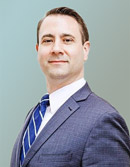Below you will find a real life case study of a couple who are looking for financial advice on how best to arrange their financial affairs. Their names and details have been changed to protect their identities. The Globe and Mail often seeks the advice of our VP, Wealth Advisor, Matthew Ardrey, to review and analyze the situation and then provide his solutions to the participants.
![]()
Written by: DIANNE MALEY
Special to The Globe and Mail
Published November 16, 2018

Sometimes, it seems you can work hard all your life and end up with less than you hoped for in your middle years.
That’s what happened to Evelyn and Rocky, who have had to help out parents and children alike over the years. He is 66, she is 54.
Their consulting business nets about $12,500 a month after taxes and business expenses, although their commission-based earnings are lumpy.
“We started late,” Rocky writes in an e-mail. “Nineteen years ago, we both came out of previous marriages with no assets to speak of other than a seven-year-old car.” Last spring, the family-related financial pressures eased and Evelyn and Rocky began saving aggressively for retirement, which for Evelyn can’t come soon enough. They hope to retire from work with $6,500 a month after tax.
They plan to sell their Toronto house, pay off the mortgage and move to a condo townhouse in St. Catharines, Ont., investing whatever is left. They’d continue to spend winters in their Florida condo. For extra income, they want to buy an investment property in the United States.
“How can we improve what we are doing?” Rocky asks.
We asked Matthew Ardrey, a vice-president and financial planner at TriDelta Financial in Toronto, to look at Rocky and Evelyn’s situation.
What the expert says
First, Mr. Ardrey looks at whether the couple’s plan is viable.
They sell their Toronto home next spring for $675,000, net of selling costs, and buy a townhouse in St. Catharines for $325,000. They pay off their existing mortgage and use the balance to max out their registered retirement savings plans and tax-free savings accounts.
Evelyn would retire from work at the end of 2019 and their cost of living would rise by 2 per cent a year on average.
“Once Evelyn retires, they will be able to sell their business for an estimated payment of $100,000 per year over two years,” Mr. Ardrey says. This will be split equally between them. He assumes Rocky keeps working part time, earning $3,000 a month after taxes and expenses.
Rocky is already receiving Old Age Security benefits of $465 a month, reduced because he has been in Canada only since 1991. He will also get reduced Canada Pension Plan benefits, which he has opted to take at age 70. Evelyn will begin collecting CPP and OAS benefits at age 65.
For 2018, they have saved $11,630 to their RRSPs and $41,386 to their TFSAs. In addition they have saved about $39,000 for a down payment on a U.S. rental property.
A review of their investment portfolio – mainly mutual funds – shows a historical return of 4.28 per cent with investment costs of almost two percentage points. “With inflation assumed at 2 per cent, this leaves very little available for a real rate return,” Mr. Ardrey says.
To boost their income, Rocky and Evelyn plan to buy an investment property for US$120,000 that would generate about US$250 a month net of expenses.
Will their plan work?
“Based on these assumptions, Evelyn and Rocky fall way short of their retirement goal,” the planner says. They would run out of savings by 2031, when Evelyn is only 67. To make the plan work, they would need to reduce their target spending by 35 per cent to $4,250 after tax a month.
“There is no magic bullet for retirement planning. You have to retire later, save more, spend less or improve returns.” In Rocky and Evelyn’s situation, it is a combination of these four factors.
Even if they retire at the end of 2022 when Rocky is 70 and Evelyn is 58, they will run out of savings by 2045, when Evelyn is age 81, Mr. Ardrey says. Alternatively, they would have to reduce their spending by about 25 per cent to $5,000 a month.
To meet their goals, Rocky and Evelyn will have to make several changes. First, they need to improve their investment returns.
After they sell their house next spring, they will have enough money to hire an independent investment counsellor with a view to improving returns and lowering costs.
Mr. Ardrey suggests their new investment strategy include alternative assets, such as private debt, global real estate and accounts receivable factoring.
“This should increase their return to 6.5 per cent while reducing their investment costs to 1.5 per cent.”
(Many investment counsellors keep a list of alternative strategies – alternatives to stocks and bonds – that the firm has vetted and considers suitable for its clients. Investors whose income may not be high enough to buy directly from an alternative asset manager can buy these securities if they are working with a portfolio manager or investment counsellor.)
As for the U.S. investment property, Evelyn and Rocky should forget about it and direct the money instead to their investment portfolio, Mr. Ardrey says. At some point, they may also need to consider selling their Florida condo.
Client situation
The people: Rocky, 66, and Evelyn, 54
The problem: Can they afford for Evelyn to retire soon and still meet their spending goal? Should they buy a U.S. investment property?
The plan: Take steps to improve investment returns. Forget about the U.S. rental property. Consider working longer or lowering spending target.
The payoff: A more workable plan.
Monthly net income: $12,500
Assets: Cash $4,300; savings account $39,000; his TFSA $37,600; her TFSA $24,360; his RRSP $66,300; her RRSP $64,700; residence $675,000; Florida condo $175,500. Total: $1.09-million
Monthly outlays: Mortgage $1,275; property tax $350; home insurance $135; utilities $345; Florida condo fees $295; maintenance $50; transportation $620; groceries $900; clothing $40; charity $40; vacation, travel $460; dining, drinks, entertainment $260; personal care $50; pets $255; subscriptions, other $40; doctors, dentists $100; drugstore $50; health, dental insurance $355; life insurance $670; phones, TV, internet $365. Total: $6,655. Surplus $5,845 goes to TFSAs, other savings.
Liabilities: Mortgage $133,000
Want a free financial facelift? E-mail finfacelift@gmail.com.
Some details may be changed to protect the privacy of the persons profiled.

